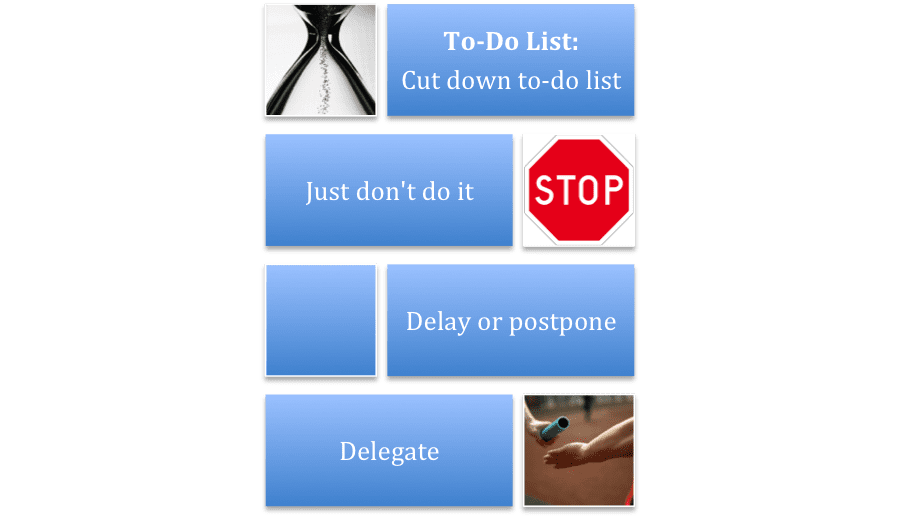 I recently read Essentialism: The Disciplined Pursuit of Less by Greg McKeown. The theme of the book – eliminate everything in life that is not essential – is an important lesson for the time strapped CEO to learn. Following his advice, I have provided a much shorter article from my friend Jim Schleckser at the Inc. CEO Project. He communicates the same concepts more succinctly and focuses on CEOs, referencing the high-value roles of the CEO that I’ve also covered on this blog.
I recently read Essentialism: The Disciplined Pursuit of Less by Greg McKeown. The theme of the book – eliminate everything in life that is not essential – is an important lesson for the time strapped CEO to learn. Following his advice, I have provided a much shorter article from my friend Jim Schleckser at the Inc. CEO Project. He communicates the same concepts more succinctly and focuses on CEOs, referencing the high-value roles of the CEO that I’ve also covered on this blog.
Embracing a Not-Do List
by Jim Schleckser, CEO and Managing Partner, Inc. CEO Project
A key question every CEO faces is how they can get out of Player mode and spend more time in high-leverage roles like Architect, Coach and Engineer. The secret to getting there is the “Not-Do” list. Everyone has a To-Do list. It helps us stay focused and organized. It’s also an easy place to park things that we think we should be doing, but really don’t have the time to tackle or remember it at that moment. There is nothing more satisfying that crossing something off your To-Do list. Yet, there is a tyranny in this practice because we tend to cross the easy things off the list to give ourselves that little jolt of accomplishment and joy. But these things – which might include checking and responding to your email – are generally not the things that will change the business. They may be urgent items perhaps. But they’re still easy and not that important in the grand scheme of business growth.
So how can we go about re-focusing our To-Do list? The best leaders make the same list as everyone else. Great leaders put the tasks in a rough order of most economic impactful to least impactful on their businesses. Then they make a key change. They draw a line about halfway up the list and write below the line in the margin “Not-Do,” which now applies to anything below the line. While that might seem drastic – you wrote those items down for a reason – the point is to get you to think about applying some strategy to thinking about those items.
The first strategy is to just not do it. Make a decision that you are not going to spend time on that issue. Hopefully it will go away. But in any case, you will not be taking action on that particular item at this time.
The second strategy is to delay or postpone. That means not taking any action on it for an extended time. Many times, this delaying tactic will result in a reevaluation of the importance of the task; i.e. it just doesn’t seem as critical as it once did. Occasionally, someone from within your organization will recognize that it is important for him or her to take the action needed to complete the task. Other times, the situation will shift and the need for action goes away. That, of course, can be a hard choice for action-oriented leaders to make. As we know, the bias for taking action is both a strength and a weakness for entrepreneurs. The truth is that waiting can work.
The last technique for dealing with your Not-Do list is to delegate. If an item is too important to defer, but still doesn’t rank in the top half of your personal list, it is a great one to delegate. Find the right person inside or outside the organization that can best accomplish this. Then make it a point to assign it to them. People are generally flattered you, as CEO, have asked them to help. What seems like a normal task to you as the leader can seem like a real stretch assignment for an employee. This gives you two benefits: The task gets done and you have developed an employee.
The Not-Do list should be revisited on a regular basis, perhaps monthly. This will allow you to become more aggressive over time and shorten your personal To-Do list. With regular maintenance, you can help make sure that you keep those pesky non-crucial issues that find their way onto your To-Do are eliminated or delegated, which frees you up to work on the most critical constraints facing your business.
Give it a try! You may find your way on a path to being a better Architect, Coach and Engineer.





Love this perspective. It’s no secret that companies are asked to do more with less. The thing that separates the good from bad is that companies that do a few things with focus are better able to satisfy their customers than companies that do many things with mediocrity. http://bit.ly/cc6Ykl
Well said Andy! Thanks